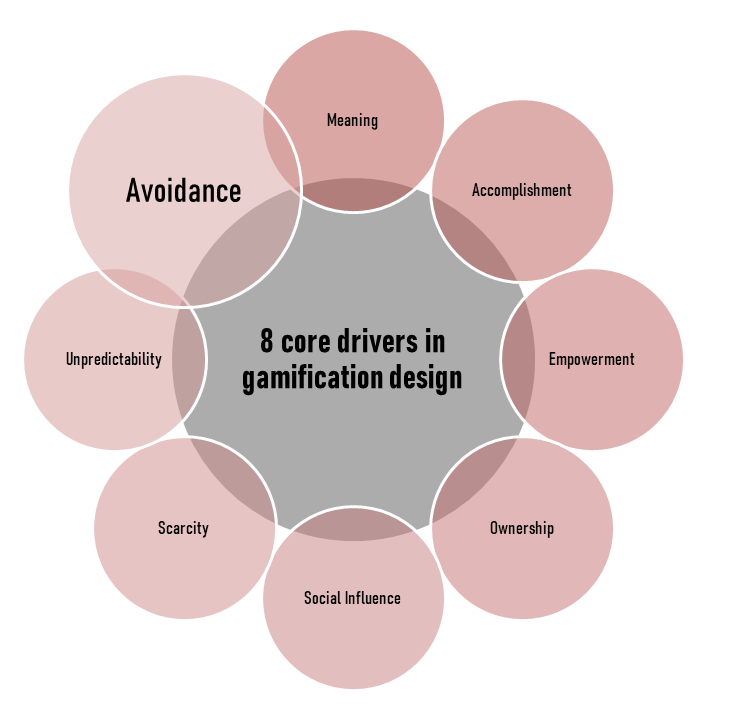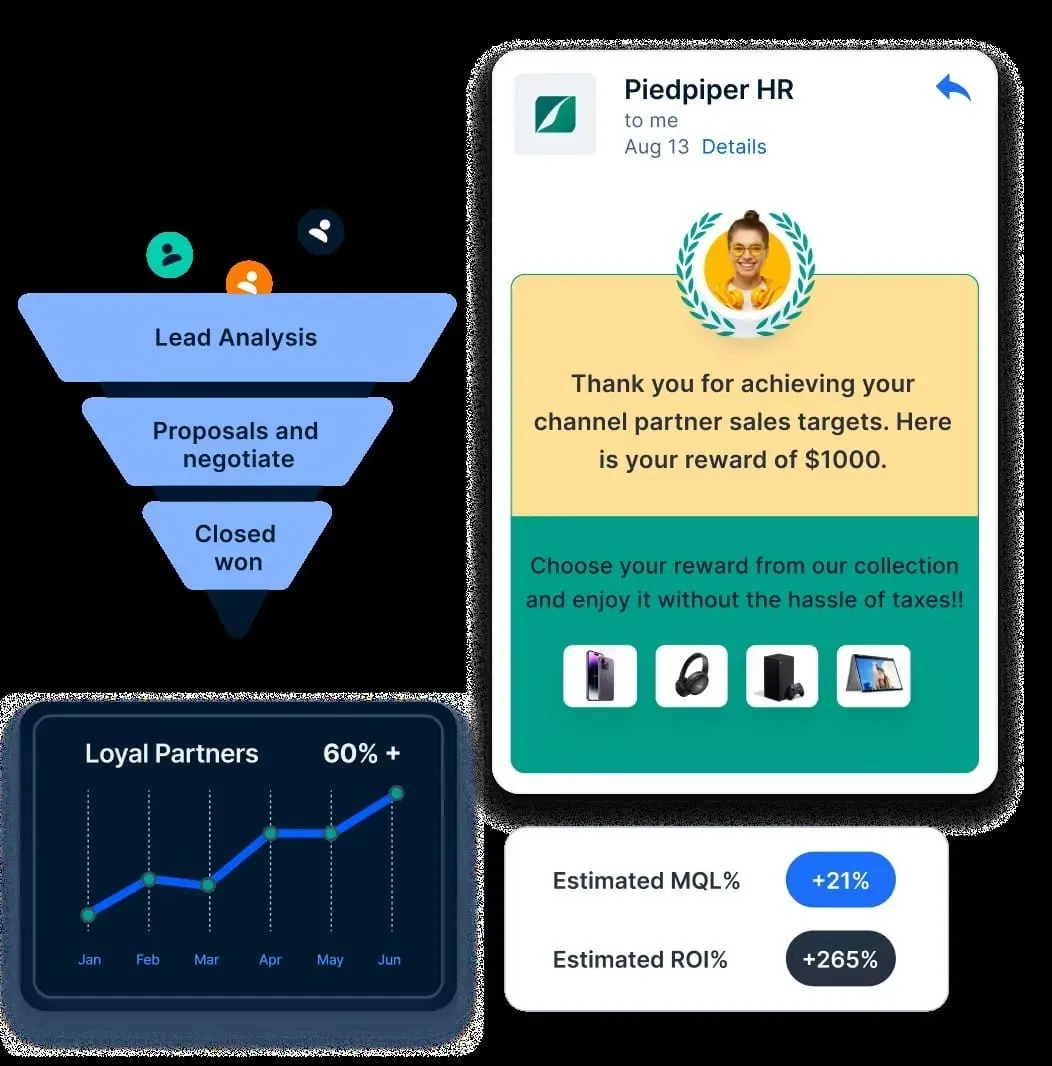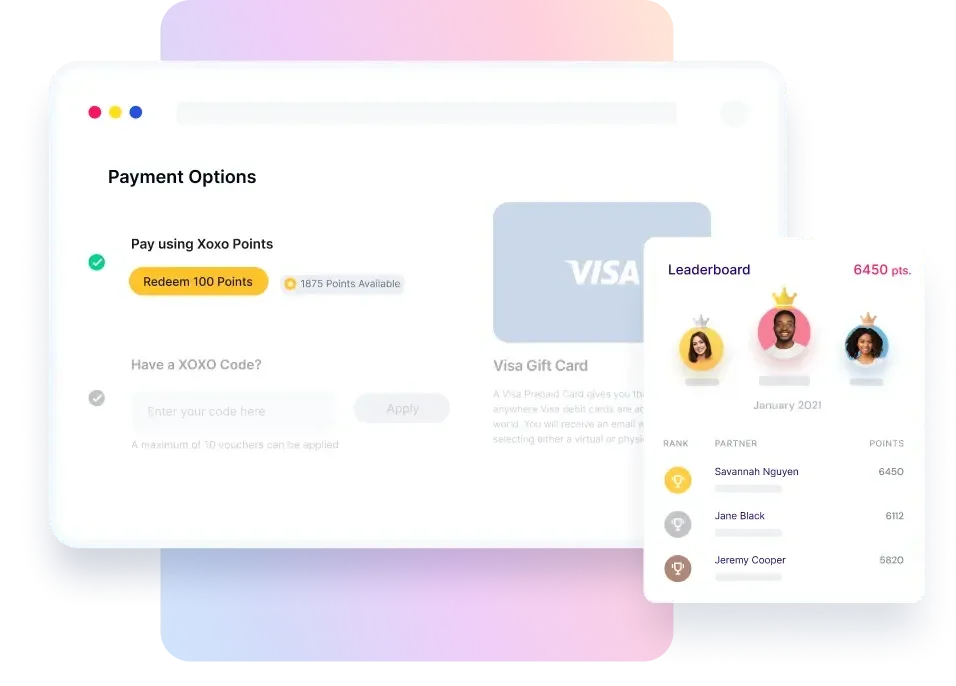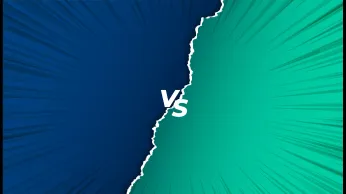Applying Loss Aversion Bias to Modify Consumer and Employee Behavior
We've spent so much time fighting about what kind of marketing is the best that we often forget what it's about: Human to human marketing.
في هذه الصفحة
Why is it so difficult to toss that dress or the shirt that you know you are not going to wear? Or give away that book that has been on the shelf forever, and you haven’t read? Why is it not easy to give up that job that you absolutely hate doing?
Though you know that giving them up is the most rational thing to do, your mind still refuses to do so. Why are we so afraid of losing something? This is because we human beings are wired that way. We try to avoid loss more than trying to pursue a similar gain. This phenomenon is popularly known as Loss Aversion. In this article, witness a few loss aversion examples where this principle is applied to modify consumer buying behavior for marketing and employee behavior and attitudes for HR.
Nobel prize-winning psychologists Daniel Kahneman and Amos Tversky, proposed the Prospect theory in the year 1979, which popularized the concept of loss aversion. Even today, Prospect theory is considered to be one of the most influential theoretical frameworks in the field of behavioral economics.
وجدت دراسة Kanheman-Amos هذه أن البشر يتفاعلون بشكل مختلف مع المكاسب والخسائر. الفوز والفشل. في الأساس ، أي تغييرات إيجابية وسلبية على وضعنا الراهن. يمكن أن يكون فقدان شيء ما (مال ، عنصر ، وظيفة ، صفقة كبيرة ، إلخ) مؤلما مرتين مثل كسب نفس الشيء.
على سبيل المثال ، يمكن أن يكون ألم فقدان فاتورة بقيمة 100 دولار أسقطتها عن غير قصد أثناء البحث في محفظتك أكبر بكثير من تلقي فاتورة بقيمة 100 دولار كهدية من شخص ما.

لا يقتصر النفور من الخسارة على عاطفة خسارة المال أو أي حيازة مادية. ينطبق على كل جانب من جوانب حياتنا اليومية. في الأساس ، يؤثر النفور من الخسارة كمبدأ على المشاعر البشرية - عاطفة تقليص أو تقليص حجم أي شيء. يخاف البشر من فقدان أي شيء "نمتلكه" - سواء كان ذلك العلاقات أو الأعمال التجارية أو الأفكار أو الأفكار وما إلى ذلك. على سبيل المثال ، قد تكره خسارة حجة تناقش فيها رياضتك المفضلة أو أيديولوجياتك السياسية أو شيء أنت متحمس له.
Businesses of today are investing a lot of time and money in understanding human behaviours and how subtle aspects of organizational policies, design, rewards, recognition etc. change can greatly influence employee and customer behaviors.
Loss aversion bias applied to consumer buying behavior for marketing
We have all come across marketing campaigns that say – “Limited period offer, only for you!”, “Best price, applicable only till midnight”, “Register now to get free service for a year”, “Last chance to buy”, etc. And most of us, at some point of time in our life, have been guilty of making an impulsive purchase, in fear of missing out on a great deal.
Have you also experienced this “Fear of Missing Out” or FOMO? Don’t worry, you are not alone. 70% of the millennials experience FOMO on a regular basis, says a recent study.

FOMO is nothing but a form of social anxiety, that has its deeper roots in the principle of Loss Aversion – and invokes fear of missing out on an exciting opportunity or a deal in people.

من المؤكد أن مفهوم FOMO والنفور من الخسارة قد استحوذ على خيال جميع المسوقين. ولا عجب أن كل موقع ويب وكل علامة تجارية ، في وقت ما أو غيره ، حاولت الإعلان عن عرض "ينتهي قريبا" (وهو في الغالب ليس كذلك!).
However, one needs to be extremely careful not to overuse loss aversion in their customer campaigns. When overused, loss aversion can lead to what is called banner blindness – i.e., customers are unlikely to click on anything that looks like an ad.

“95% of the purchasing decisions are made subconsciously,” says professor Gerald Zaltman in his book How Customers Think: Essential Insights into the Mind of the Market. Emotion is what drives customers’ purchasing behaviors he says.
Hence, to effectively use loss aversion to increase conversion rate and brand engagement requires a precise understanding of your customer behaviors, what they are afraid of losing, and why, and providing them with an appropriate solution to avoid this loss.
فيما يلي بعض الأمثلة على استراتيجيات تجنب الخسارة التي يمكن أن تساعد في زيادة معدل التحويل ومشاركة العملاء دون أن تكون انتهازية:
1. مشاركة البيانات ذات الصلة للمساعدة في اتخاذ القرار

إعلان فورد غالاكسي (كما كان مناسبا ل '70s) يستخدم الحقائق على نطاق واسع في نسخة الإعلان لاتخاذ القرار
حدد القيمة التي يكتسبها العميل من منتجك. عندما يرى العميل الفجوة بين الوضع الحالي وما يفتقده بدون منتجك ، فإنه يعمل فقط العجائب.
2. Use customer loyalty programs to give a friendly nudge
While using rewards and incentive programs with your customers, if you also set an expiry to the redemption of the same, it instils a sense of urgency amongst the customers – pushing them to take action sooner rather than later. The idea behind using rewards and incentives is to encourage customers to routinely engage in the product/ brand.

3. خلق شعور بالملكية
غالبا ما نطور رابطة قوية مع الأشياء التي نمتلكها. لدرجة أننا نبدأ في المبالغة في تقدير الكائن (حتى أكثر من قيمته الفعلية) وبالتالي نجد صعوبة في التخلي عنه. هذا ، من حيث علم النفس ، يسمى تأثير الوقف.

Slack’s free trial and conversion rate of 40% reported in 2014 is an example of capitalizing on endowment
لذلك ، عندما تمنح عميلك نسخة تجريبية مجانية أو عينة مجانية من المنتج ، فإنك تخلق إحساسا بالملكية للحث على تأثير الوقف والتأثير عليه بشكل إيجابي. يمكنهم استخدام الإصدار المحمل بالكامل من المنتج وتطوير رابطة قوية لدرجة أنهم يجدون صعوبة في فقدانها عند انتهاء التجربة - مما يدفعهم إلى الاشتراك في المنتج.
4. Provide with the right choices
تظهر الأبحاث أن العملاء يميلون إلى اختيار عدد أكبر من الميزات عندما يتم تقديمهم مع المنتج الكامل - المحمل بجميع الميزات - ويسمح لهم باختيار الميزات التي يريدون تقليص حجمها عند الخروج.

This feature comparison Ad copy of Volkswagen Jetta (2019) aims to diminish sensitivity towards the price.
الفكرة هنا هي خلق شعور بالنفور من الخسارة مع الميزات التي بدورها لديها القدرة على تقليل الحساسية تجاه السعر.
5. استخدام مراجعات العملاء بشكل فعال
Social proofing is a great way through which your customers can feel connected to your products. So, when you introduce testimonials from other customers to which your audience can relate, it invokes a sense of missing out on something that can make a difference to them – again, pushing them towards the desired action.

Testimonials (like the one above of the Udemy business version) give social proofs for virtual business offerings
These examples are only indicative of how powerful loss aversion can be. Each organization can build their own strategies, based on what its target customers really want. When used effectively, loss aversion can be extremely powerful in influencing customer behavior.
Leveraging rewards to influence consumer behavior
While loss aversion primarily hinges on the psychological discomfort of losing something of value, integrating rewards into this concept can significantly amplify its effectiveness—especially in marketing and HR strategies. By framing rewards in a way that emphasizes potential loss instead of just gain, brands and organizations can create stronger behavioral nudges that drive consistent action.
Reward programs that reinforce retention
Traditional loyalty programs focus on the accumulation of points or perks, but adding a loss aversion layer makes them more compelling. When customers are reminded that their unused loyalty points are about to expire, or that a special offer will vanish after a set deadline, it introduces a psychological pressure to act quickly.
Example strategies:
- Expiring rewards: Create a sense of urgency by reminding users that their accumulated cashback or points will lapse if not redeemed within a specific timeframe.
This time-bound pressure leverages loss aversion and nudges users to act before they lose the benefits they’ve already earned.
- Tier downgrades: Show customers how close they are to maintaining a loyalty tier and warn them of upcoming downgrades if engagement drops.
- Limited redemption windows: Offer exclusive rewards or access for a short duration to increase urgency.
These small changes use loss framing to subtly encourage customer retention, repeat purchases, and ongoing engagement—because the idea of “losing out” on something already earned feels more painful than simply not receiving it.
Loss aversion bias applied to improve employee behaviors and attitudes
In a digital world that is becoming more and more transparent, blurring the line between personal and professional lives, employees constantly seek meaningful work and motivating rewards. Forward-thinking organizations are spending more and more time understanding employee behaviors and aligning them with organizational goals to constantly keep them motivated.
تنص المبادئ الاقتصادية التقليدية على أن الحوافز النقدية والمكافآت والتقديرات يمكن أن تكون محركات كبيرة للأداء ومشاركة الموظفين. ومع ذلك ، فهذه مجرد محفزات خارجية ولا تنصف الصورة الأكبر لتحفيز الموظفين. على سبيل المثال. موظف يبذل الكثير من الجهد في ترميز ميزة منتج وتسليمها بشكل جيد خلال الموعد النهائي - فقط لكسب قسيمة أمازون ضخمة.
Whereas behavioral economic principles suggest that monetary rewards, salaries, and bonuses alone are not sufficient to drive employee engagement. In fact, A review of 120 years of research found that the link between salary and job satisfaction is extremely bleak, and this is true globally.
"انسوا الثناء. ننسى العقاب. ننسى النقد. أنت بحاجة إلى جعل وظائفهم أكثر إثارة للاهتمام" ، قال فريدريك هيرزبرج ، عالم النفس الأمريكي.
يزدهر البشر على الدوافع الجوهرية مثل الاستقلالية ، والشعور بالهدف ، وإتقان الموضوع ، وما إلى ذلك. هذه هي العوامل التحفيزية التي تأتي من الداخل وتدفع الموظفين إلى القيام بشيء ما من أجل الرضا الشخصي. على سبيل المثال ، الموظف الذي يقدم ميزة ترميز منتج معقد بشكل جيد في الوقت المناسب ، فقط لأنه يحب القيام بذلك ، ويستمتع حقا بعملية التعلم.
When organizations consider these human idiosyncrasies to design employee engagement programs that nudge employee behaviors towards better performance and increased motivation, it truly works wonders.
Further to this, the loss aversion phenomenon shows that people are motivated better by the fear of loss than the promise of rewards. So, effective employee programs need to be designed in such a way that they not only reward success but also have a clause to penalize failures. Research has time and again proven that limited use of penalties has driven higher productivity and effectiveness amongst employees. At times, penalties can simply mean altercated language to communicate the feeling of loss – For E.g. “You will lose your extra 5% bonus if you don't complete the project by the end of the month”.
دعونا نلقي نظرة على بعض الأمثلة على كيفية تأطير برامج المكافآت والتقدير بطريقة تجذب نفور الموظفين من الخسارة:
1. Constant positive feedback
Consistent, personal feedback and appreciation have a profound effect on human psychology.

عندما يتم تقدير تصرفات الموظف ومكافأتها ، فإنها تؤدي تلقائيا إلى الرغبة في تنفيذ الإجراء مرة أخرى - بطريقة أفضل. يمكن أن يكون الرضا عن تلقي ردود فعل إيجابية حافزا كبيرا ، وهو ما لا يريد الموظفون خسارته.
2. Implement instant gratification
يجد الموظفون قيمة في الاعتراف بإنجازاتهم - في شكل حوافز وجوائز فورية وما إلى ذلك. - عاجلا وليس آجلا.
في حين أن الإشباع الفوري هو دفعة معنوية كبيرة للمنجز ، إلا أنه يحفز الآخرين في الفريق على التنافس بقوة أكبر للوصول إلى أهدافهم.

مع Empuls يمكن للمستخدمين إرسال مكافآت وتقدير فوري مع Empuls
3. Keep innovating, keep changing
استمر في تغيير المكافآت حتى لا يشعر الموظفون بالرضا عما هو معروض.

يحتاج الموظفون إلى الاهتمام والمشاركة والتحفيز للقتال من أجل المكافأة. برنامج الحوافز العظيم هو برنامج ليس ثابتا أبدا.

تستخدم Compass التدرج، والمكافآت القائمة على المعالم الرئيسية للأداء
4. التلعيب
تتبنى المؤسسات بشكل متزايد تقنيات التلعيب (مثل لوحات المتصدرين والشارات وما إلى ذلك) لتعزيز تحفيز الموظفين وتحقيق نتائج قابلة للقياس.

‘Avoidance’ of ‘loss aversion is one of the 8 core drivers in gamification design.
Gamification is known to deliver proven results like – increased engagement, improved performances, increased competition, while instilling positive behavior.

تستخدم Compass عناصر التلعيب مثل لوحات المتصدرين لتحفيز الأداء
Using rewards and recognition programs to strategically influence employee behaviors can drive better engagement and improved performance.
Leveraging rewards to influence employee behavior
In workplace contexts, incentives don’t always have to be structured around future gains. Instead, forward-thinking companies are now experimenting with “prepaid” bonuses or rewards that employees stand to lose if performance expectations aren’t met. This flips the traditional model—motivating through potential loss rather than distant rewards.
Example strategies:
- Performance bonuses: Provide a performance bonus upfront with the clause that it will be deducted if quarterly targets aren't met.

- Gamified leaderboards: Reset performance rankings monthly or quarterly using a leaderboard, so employees are incentivized to maintain their position and not “fall behind.”

- Time-sensitive recognition programs: Offer spot awards with a redemption window, emphasizing the urgency to act before they vanish.
These tactics align with behavioral economics findings: people will work harder to retain what they believe is theirs than to earn something new.
افكار اخيرة
Behavioral economics principles like loss aversion play a huge role in employee or customer behaviors. While these principles can greatly influence behaviors, the idea of using these in workplaces should be to increase engagement and not invoke a sense of fear.
Rewards, recognition, and incentives when designed with behavioral economics principles, works wonders in shaping employee and customer behaviors. Understanding their needs and fears can help you design loyalty and engagement programs that can positively influence their behaviors.
Keen to know more about how to apply loss aversion to drive your customer and employee behaviors?
Connect with our experts and know how Xoxoday products help you use loss aversion to your advantage.










